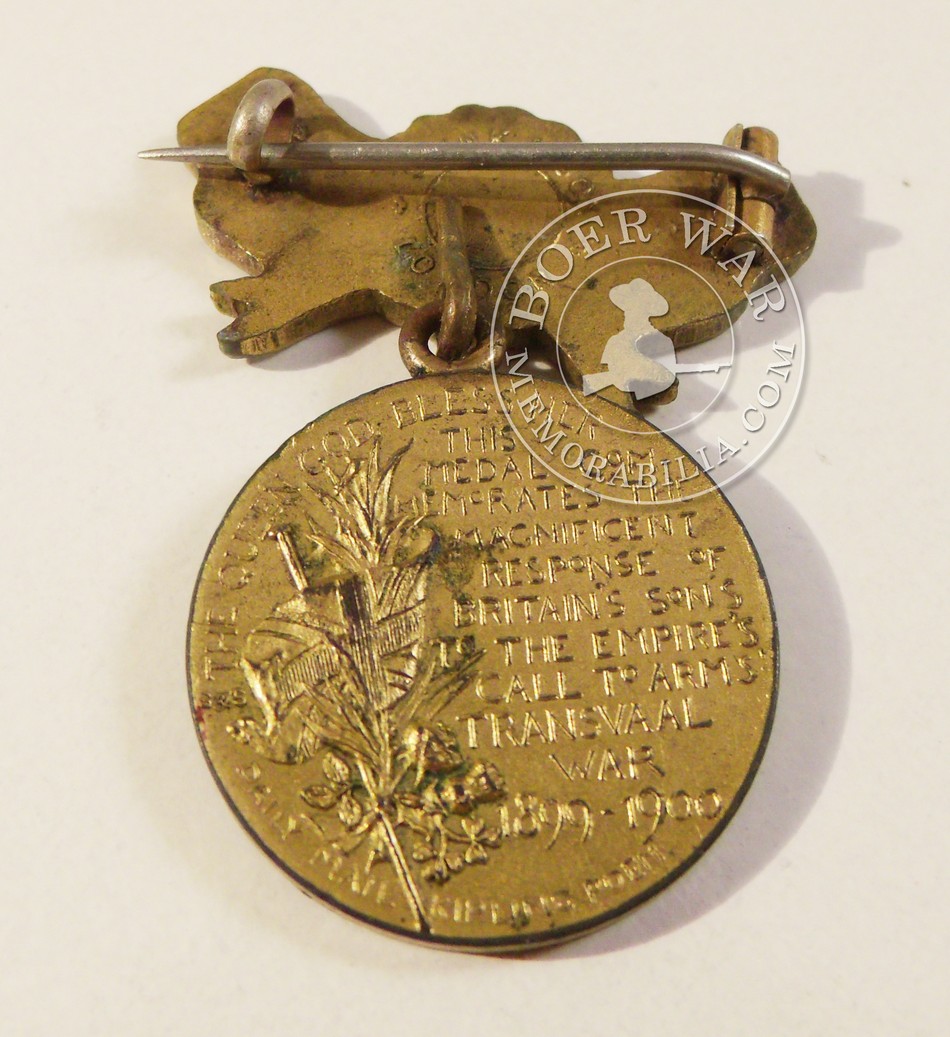|
View the embedded image gallery online at:
https://boerwarmemorabilia.com/index.php/memorabilia/medallions/item/164-boer-war-medallion#sigProId7e09f95903 |
Item Ref# MS7440
The Transvaal War - The Comemmorative Medal 1900 The sentiment in Britain at the outset of the South African War was strongly in favour of the military action. Thousands of young men volunteered for service to “Queen and Empire”. Charities were set up to assist them and their families. The proceeds from the sale of this medal went to Daily Mail for the Kipling Poem War Fund which is reported to have received 70,000 pounds sterling in fourteen weeks. Obverse: Full figure of a British soldier with rifle at the ready standing on rocky ground, head bandaged and helmet at his feet. Reverse: To the left, a flag pole with the Union flag wrapped around an ear of wheat entwined with the national flowers of England (rose), Scotland (thistle) and Ireland (shamrock). |

British Scorched Earth Tactics
The scorched-earth policy, which was part and parcel of an elaborate British counter-guerrilla strategy, was initially implemented by Roberts, but was subsequently extended in scope and intensity by Kitchener. By stripping the land of everything that could be of assistance to the die-hard Boers in their continued liberation struggle, the British hoped to undermine their adversaries’ ability and will to fight on.
Consequently, approximately 30 000 white farm homesteads plus outbuildings, as well as the houses of the black farm workers (i.e. more than 100 000 homes in total) were either burnt down or blown up with dynamite, while more than 40 towns and villages were also partially or totally destroyed.
Large areas of the Orange Free State and Transvaal were laid waste. These actions of the British forces and the concomitant establishment of the internment camps (British consentration camps - also known as Hell Camps), gave rise to negative publicity in the pro-Boer media internationally, and elicited severe criticism from opposition politicians in Britain and, of course from the Boer commanders in the field.
Source: Boer Guerrilla and British Counterguerrilla Operations
| Scripture |
|
“And Peter answered him and said, Lord, if it be thou, bid me come unto thee on the water. And he said, Come. And when Peter was come down out of the ship, he walked on the water, to go to Jesus.” Matthew 14:28, 29 |

